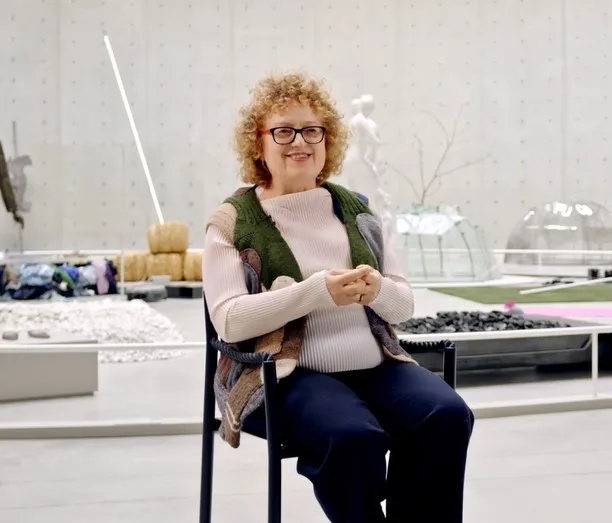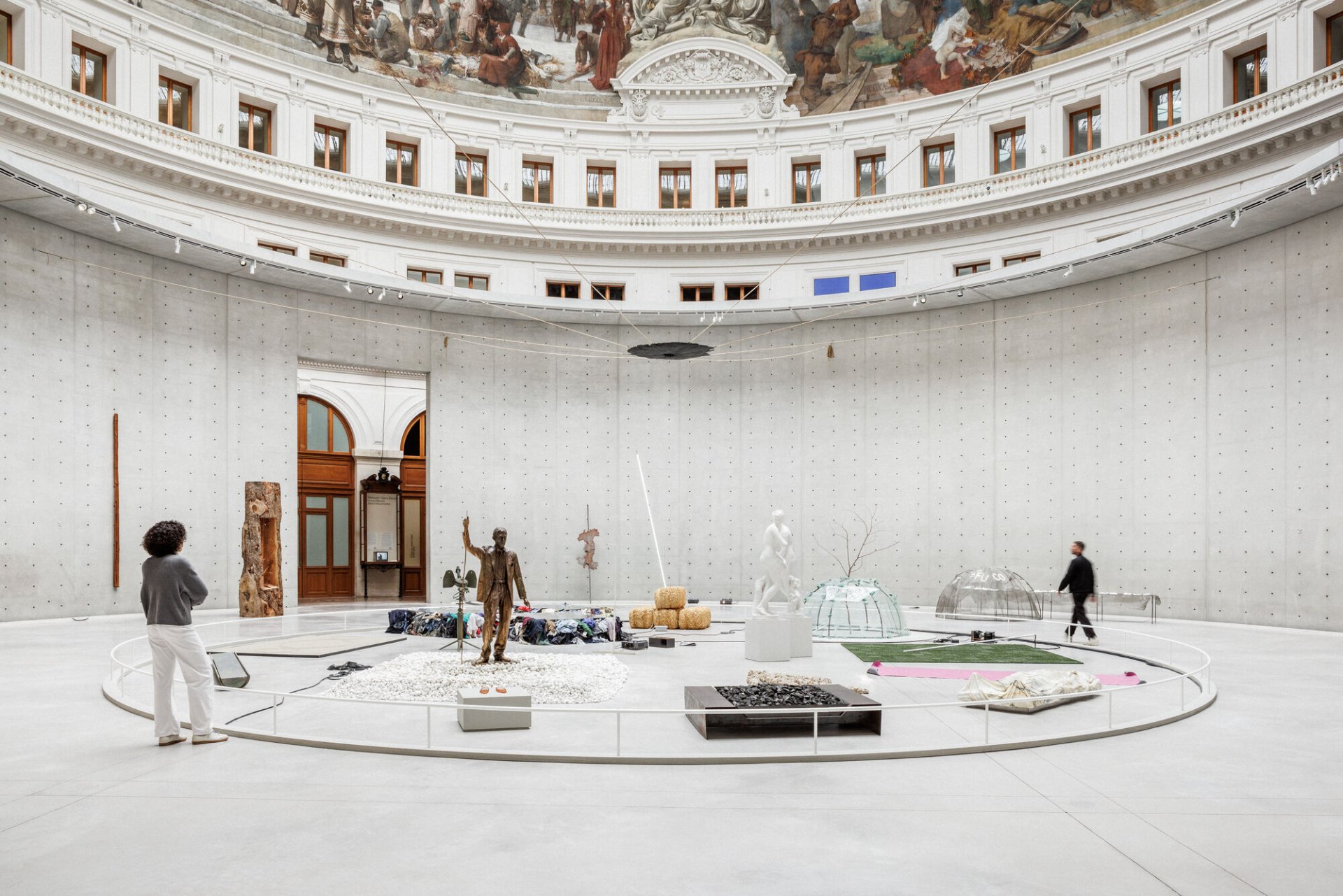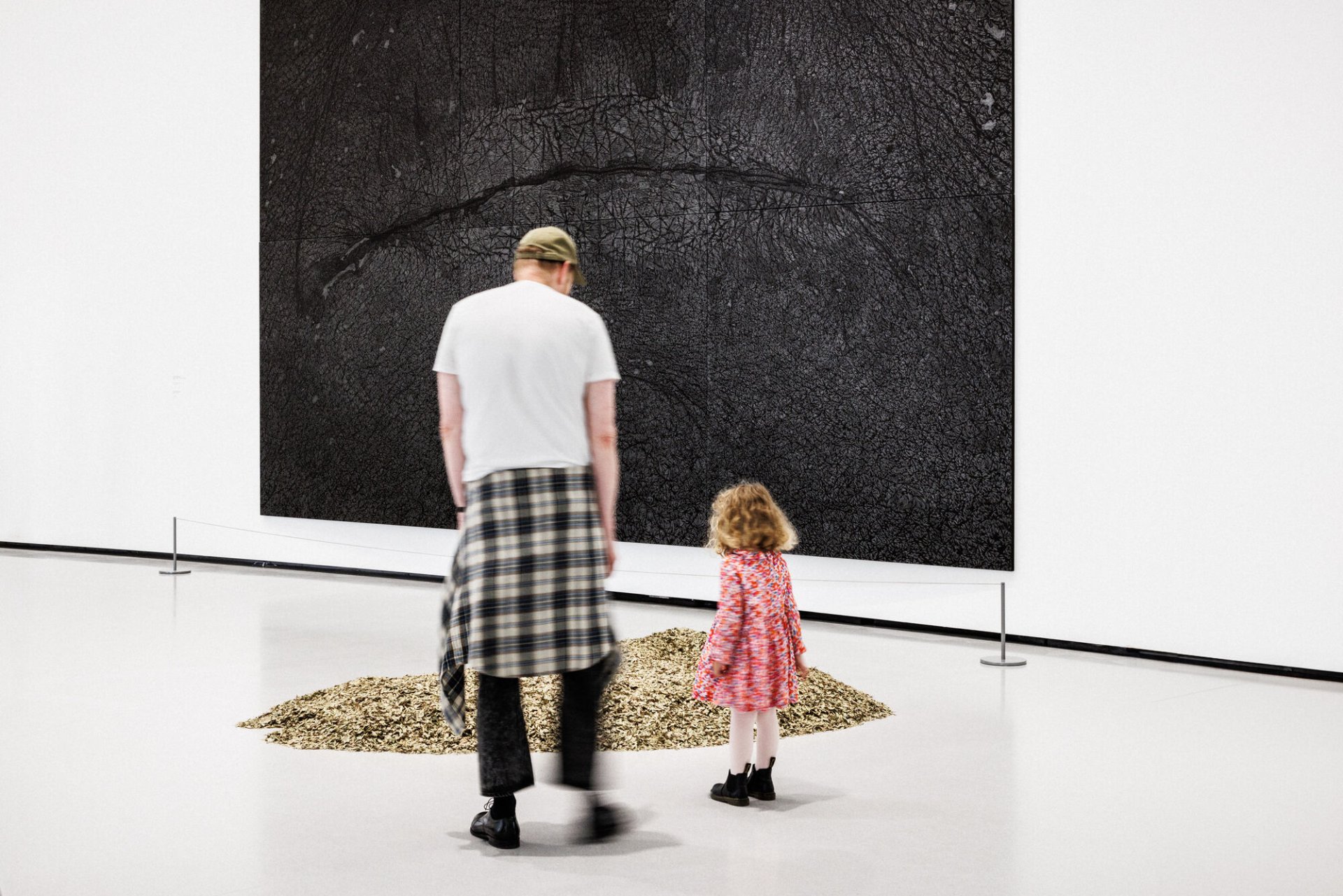
"I don't see Arte Povera as a movement, It's a state of mind." — Carolyn Christov-Bakargiev
Carolyn Christov-Bakargiev, specialist of Arte Povera, and curator of the exhibition sheds light on this artistic movement and explains her curatorial choices.
What is Arte Povera?
Defining Arte Povera is very important, and, at the same time, almost impossible. Arte Povera is an art movement created by Italian artists in the mid-1960s, at a particular moment in history after the Second World War and the destruction of the country, the end of fascism, new modernisation, and immigration from the south to the factories of the north.
In this incredible process of modernisation and, at the same time, of rupture from a very ancient agricultural civilisation, a number of artists in Turin, Genoa, Rome and Milan began to create a form of "anti-production". In other words, very simple and essential works using poor materials. In other words, humble, inexpensive materials such as potatoes, trees or coal. This form of art, this Arte Povera, is a reference to the altissima povertà, extreme poverty, like that of Saint Francis. It's a vision comprised of vital and energetic things that puts human, non-human, natural and cultural aspects on the same level. And it places at the heart of the work the fact that it must be alive and that it must be a field, what we now call an installation, a field through which energy flows.
It's a vision comprised of vital and energetic things that puts human, non-human, natural and cultural aspects on the same level.
How did this artistic movement emerge?
Arte Povera artists came from separate age groups. The different generations came into contact with each other in the mid-1960s thanks to a young art critic from Genoa who was barely 20: Germano Celant. He welcomed 6 of the 13 artists to an exhibition in Genoa, and that's where it was christened "Arte Povera". I'm talking about the "Arte Povera - Im Spazio" exhibition. There were six artists. Luciano Fabro with Pavimento. Pascali with Un metro cubo e due metri cubi di terra. Prini with his wonderful Perimetro d'aria, which is also here at the Bourse de Commerce. Boetti with Catasta, which filled the space below the stairs. Giulio Paolini with Lo spazio, the letters that make up the word "space" where the audience was. And, of course, Jannis Kounellis with his first coal sculpture. It was there, in that small gallery in Genoa, that Germano Celant first used the term "Arte Povera".

How did you approach the Rotunda space?
When I was first invited by François Pinault, the Bourse de Commerce, and Emma Lavigne, I immediately agreed to do this exhibition because the Pinault Collection is incredible. It contains around 150 Arte Povera works. From this group of works, I chose around 50 masterpieces which are in this exhibition and which lay the foundation for the exhibition. Among these masterpieces is a small Direzione by Anselmo, the first one that Anselmo ever made. It's a small object with a compass, which points north and tells us that every point in the universe is a centre, or can be one. I immediately knew that it had to be in the Rotunda, this wonderful space that is the heart of the Bourse de Commerce. And by placing this small object in the Rotunda, I thought about how Arte Povera had focused on a collective subjectivity.
I wanted to give a sense of the plural nature of Arte Povera in the Rotunda. I thought of using, for the first time, the Rotunda to present works by all the artists, moving from an early work to a more recent work by each artist. If you think about the growth and energy of Arte Povera, well, it's not a movement that ended in 1972. It continues to this day. From this central gallery and this Rotunda, there are lines of escape that lead towards the individual. And each artist, each of the thirteen, has a dedicated room.
The 13 artists are associated with historical references. Can you explain?
The individual rooms for each of the thirteen artists are arranged like small retrospective exhibitions. Having a young audience in mind, I thought it was important to show the masterpieces of each artist. So, in the Fabro room, we have, of course, the first Italia. It's the map of Italy upside down. And in Michelangelo's room, of course, we have the first Venus of the Rags, la Venere degli stracci. But I also felt it was necessary to broaden the range of Arte Povera and to show how this sensibility, oriented towards a phenomenological reduction of the experience of reality, and an attention to the way in which matter itself contains energy, should also be explained as something that endures over a long period of time.
So, for example, in Kounellis' room, I wanted to show the relationship between the reduction to zero, and, at the same time, the profound spirituality of Malevich's work. And how, at the end of the 20th century, the response to Malevich, that repeats Malevich, is the square of black charcoal that comes out of the canvas and falls to the ground. It is a black square but also coal. So this simple act from Malevich, in the midst of the development of cinema and photography, is very similar to ethics and aesthetics. Or ethical aesthetics, depending on Kounellis's point of view.

Why do you set up a dialogue between Arte Povera and more contemporary art?
In my opinion, I don't see Arte Povera as a movement from the late 1960s. It's a state of mind, a point of view on what a work of art can be. This point of view, this state of mind, has existed for centuries. And it also existed after Arte Povera. So I wanted to perpetuate the essence of Arte Povera and show that it exists in the works of artists all over the world, not just in Italy, and who began working after the Arte Povera period. If we look back at the 1980s, 1990s, 2000s and 2010s, in each period, throughout the post-Arte Povera period, we find artists who wanted to resist and go against what was complicated art, the overly complicated art of their time.
In South Africa in the 1980s, for example, there was a young artist called William Kentridge, who was just beginning to work. Around 1989, he made his first Drawing for Projection. In other words, a poor form of animation, a simplified version of it, at the same time as Pixar was starting to make "rich" animation. And this man began to draw on paper with charcoal, and cancel, erase and tear up pieces of black paper. He made what I define as poor film, poor cinema and poor animation.
In my opinion, I don't see Arte Povera as a movement from the late 1960s. It's a state of mind, a point of view on what a work of art can be.
What is Arte Povera today?
Since the exhibition at the Bourse de Commerce opened its doors, the public has amazed me. What I've seen is a young public. It fills me with joy, but it also confirms something that I've been feeling. Arte Povera is an art movement, a point of view on art that is extremely important for those who live in the current digital age, with their smartphones, and who are a little fed up with social media. We're engulfed by social media, by this narcissistic melancholy. All eyes on us, always trying to showcase ourselves as alienated work to others.
There's a fragility in the contemporary digital subject, who is ready, I think, and who would like nothing more than to be in relationship with the hic et nunc, here and now, me, my body, what I can know through my senses. It is this sensuous knowledge, this possibility, that Arte Povera has set down in the relationship between the physical and the mental, the continuity between the sensual and the ethereal, between the abstract and the concrete.